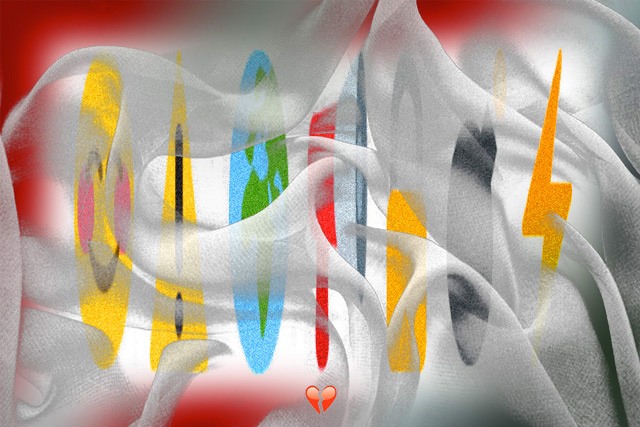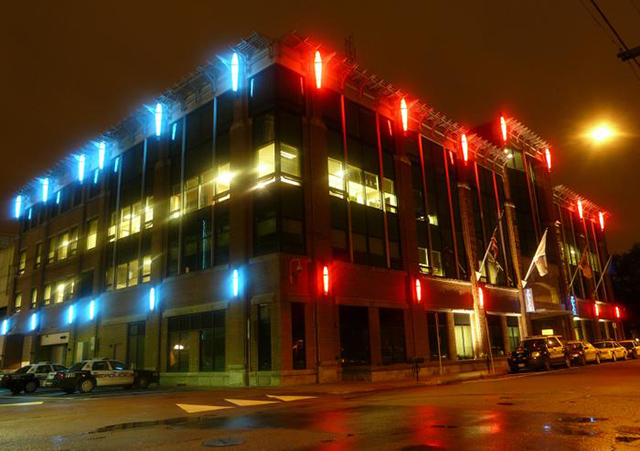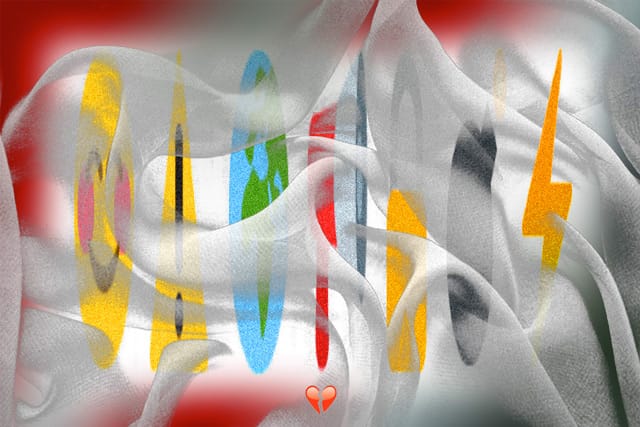Modes of Criticism editor Francisco Laranjo questions the terms 'critical', 'speculative design' and 'design fiction', while proposing some critical challenges for graphic design.

Trends normally control the use of terminology. Within product design, ‘critical design’ is developing as a field with projects, papers, articles, publications, conferences, exhibitions and debate. Within graphic design, there are predominantly press-releases, likes, FAVs, RTs and lulz. However, the interest and need for a critical graphic design practice is not aligned with the term’s demise within design discourse. In order to understand and discuss emergent phenomena, categories and temporary terminology are useful, allowing to frame goals, trace precedents, scrutinise and evaluate achievements. The relevance of this apparently decadent term lays precisely here, in enabling to identify a generally uncritical state of the discipline and generate interest in developing and theorising a new field and with it, challenging the discipline itself. If everything is fine as it is, graphic design should just continue to distribute awards on a yearly basis, celebrating its most valued aspect: formal achievement. However, if critical and speculative design are presently and trendily closer to Art Basel and Frieze Art Fair than the streets and public forums other than art museums, then there is a need for further debate.
Rise to popularity
The term critical design was popularised by product/ interaction design team Anthony Dunne and Fiona Raby. Its central idea is to use design to speculate about the social, political and cultural implications of everyday objects, producing design works that question and challenge the status quo rather than reinforcing it. Such an approach, which questions the well-established market-focused and problem-solving orientation of graphic design is not new. The theorist Donald Schön proposed instead ‘problem-setting’ in the seminal book The Reflective Practitioner (1984). While problem-solving sees problems as a given, problem-setting tries to construct the reality in which designers operate. In fact, as the design historian Victor Margolin points in The Struggle for Utopia (1997), the use of utopia and future visions can be traced at least until the 1820s. The French theorist Henri de Saint-Simon proposed a triumvirate in which “the artist’s role was to envision the future of society, while the scientist would analyze the feasibility of visionary ideas, and the industrialist would devise administrative techniques for putting them into practice.”
Dunne and Raby’s investment in the term happened primarily through the publication of Dunne’s book Hertzian Tales (1999), and their continuous production of work operating under critical design until the exhibition United Micro Kingdoms (2013) and the release of Speculative Everything(2013). The latter signalled a tendency to use the term ‘speculative design’ and ‘design fiction’ as interchangeable of ‘critical design.’ This should be questioned. While critical design is unavoidably connected to criticism, speculative design is even more open to debate. The designer Peter Bil’ak reinforced this idea in the magazine Task Newsletter 2 (2009) by arguing that “most creative work is by its very definition speculative,” as it is “formed on a basis of incomplete information, involves intuition, and explores new areas, which means it also runs the risk of not always delivering what it promises.” The first is bound to a centuries-old discipline with criteria to debate and build upon. The second can be a free ticket for unaccountable musings and visual indulgence. Speculation is more prevalent in Europe, while design fiction via authors such as Bruce Sterling is more connected to the US, namely the East-coast’s tradition in science fiction.
However, there are important precedents and parallel terminology with shared agendas to these. The Polish artist and designer Krzysztof Wodiczko is a key example, working on a series of projects which he described as ‘critical vehicles.’ His work started as a reactive and survival attitude towards the social conditions of Poland in the 1970s, which he called an oppressive psycho-social machine. The works he produced were then structures that sought to help the many times oblivious followers of a disguised autocratic regime under the illusion of freedom. This was amplified in a thriving capitalist North America in the 1980s, where he established the Interrogative Design Group at the Center for Advanced Visual Studies at the MIT Media Lab. More recently, the interaction design researcher Tad Hirsch proposed contestational design (2008) as a way to analyse a “design activity whose aim is promote particular agendas in contested political arenas” and design educator Carl diSalvo tried to connect the philosopher Chantal Mouffe’s political theory of agonism with design – namely exploring the positive impact of political conflict – in the book Adversarial Design (2012).

Speculation in the white cube
In the mid-2000s graphic design was openly flirtatious with fine art. The designer Daniel Eatock was working under his motto “Say YES to fun & function & NO to seductive imagery & colour!” while continuously designing logos for the reality show Big Brother in the UK. He became a figure that could comfortably move from commercial design to self-initiated, process-driven works exhibited in the art gallery. It also highlighted an increased interest by design in and as performance, with Åbäke being an important example. With a different approach, M/M Paris was also an emerging studio openly crossing from design to art, as documented in Design and Art (2008). But this blurriness did not really fade. With severe cuts to arts funding as a consequence of the austeriterian politics spread across Europe, museums and art galleries became the remaining (semi)public platforms that allowed designers to display their research. The artist James Bridle won the Design of the Year award by the Design Museum, while his anachronistic term New Aesthetic tried to give a name to work that illustrates the presence of the internet and digital technology in the physical world. But if the presence of drones in the art gallery is not new – let alone digital technology in the built environment – why call it “new”?
It is common to hear designers saying that they do not judge nor are in the business of criticising their colleagues’ work. This is good PR. It allows the always-tight circuit of graphic designers, clients, conferences and exhibitions to remain filled with smiles and polite, respectful nods. As a consequence, there is no generation of public debate, and the design press predominantly excels at what it does best: celebratory press-releases and descriptive news, peppered with some sentences by the designers themselves describing and validating their own work. But while in great scale this reality is largely accepted with indifference and disbelief, can critical and speculative designers adopt the same mantra? This is possible when the clients are museum directors and curators, magazine editors, publishers and event organisers. It should not come as a surprise that the vicious cycle repeats itself: <3, press-releases, RTs and friendly-FAVs ensure that smiles and polite, respectful nods generate virtually no public discourse and criticism of graphic design work produced under the banner of these terms.
Criticool style
If a designer or studio is investigating a social, political and cultural issue, there is little time left to publicly debate and question the effectiveness, success or shortfalls of that research. After all, there is already plenty of deviation from mainstream design and investment in an expanded role of the designer as researcher, writer, critic, curator. But can the expanded role of the designer come at the cost of the visual? In such a scenario, that contribution to knowledge is secondary – it is a prop to engage in larger issues... the ones that really matter. The goal is to generate debate. Second – and even though the goal is to generate debate – it is not good to expose oneself and be publicly self-critical. This is bad PR. But if even critical and speculative designers are not self-critical, what hope is left for the other 99% of graphic design? And, if the visual articulation of the work is seen as a collateral damage, a neglectable abstraction to invoke important ideas, how can graphic design mature if the visual means through which it investigates and reflects are not scrutinised?
In the age of surveillance and ‘The Internet of Things,’ it is unsurprising that there is a recurrent visual suggestion of camouflage, blurriness and a penchant to vaguely invoke the nefarious presence of technology in our lives with a cool, laid-back revivalism of anti-design with stretched typefaces, glitches, Photoshop brushes and abstract, morphed geometric shapes that leave little to no room for negotiation with the audience. The work of the Design Displacement Group – who claims it is designing twenty years in the future – is one example of this. The vagueness of the visual vocabulary in use does not allow entry points for the audience to deal with reality or the often-blurry line with virtuality. Instead, it literally illustrates a state of indefinability, but without providing insight into its mechanics. In this sense, the term critical design is not useful to do short, temporary briefs, retrofitted in curricula as buzzword and promote design summer schools. Instead, it can be an opportunity to study and question what is at its base: politics, ideology, criticism. This will, too, allow to trace lineages, potential connections, influences and strategies, from Paul Schuitema to Wild Plakken, Mieke Gerritzen to the work of Maureen Mooren and Daniel van der Velden and later Metahaven, to vaporwave, netart, and from Pinar & Viola and Slavs and Tatars to the predictable visual style Idea 366 (2014) labels as ‘post-internet’, to name just a few. This will make sure that the visual vocabulary in use is critical, not criticool.

